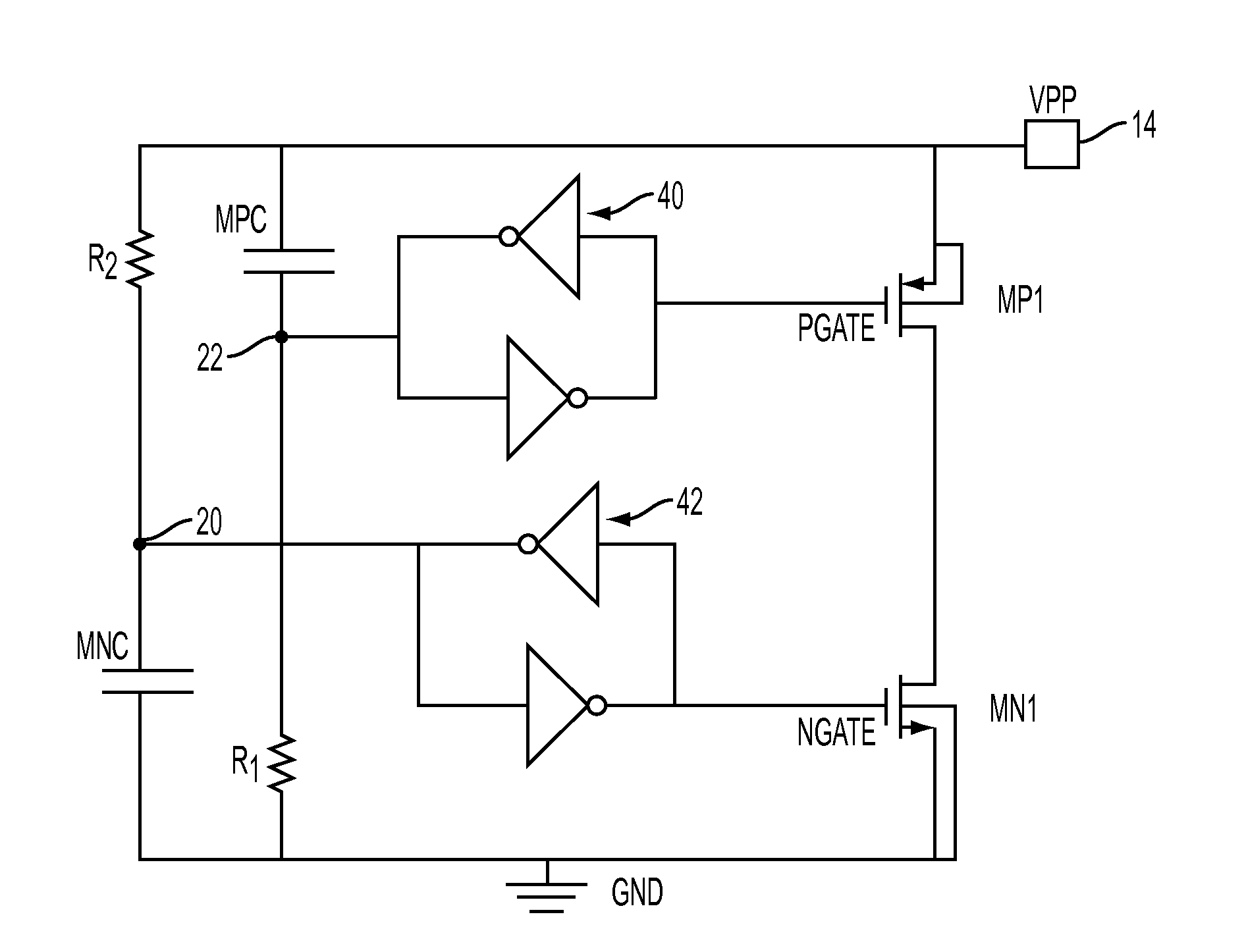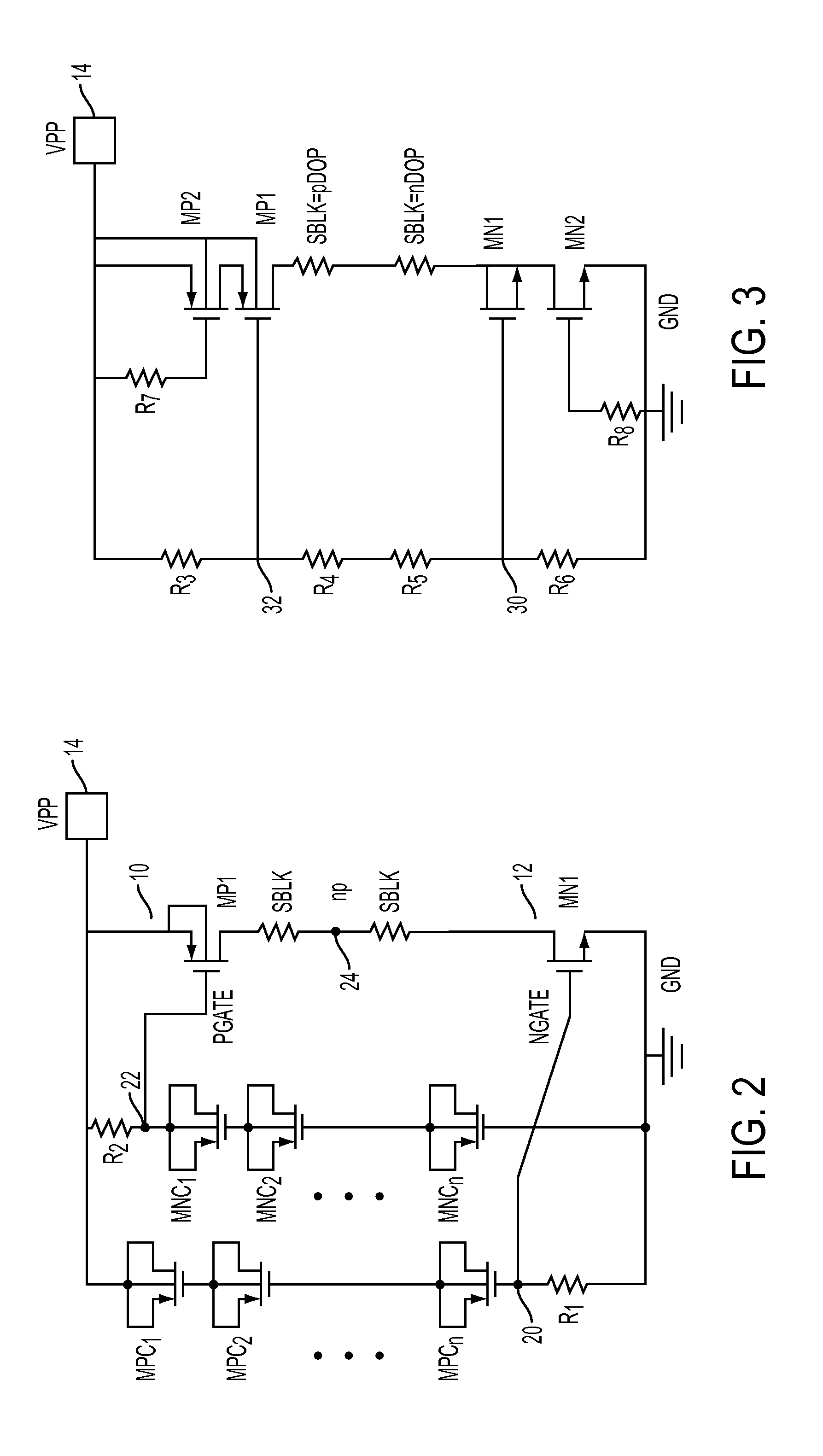Power clamp for high voltage integrated circuits
a technology of power clamps and integrated circuits, which is applied in the direction of emergency protective circuit arrangements, emergency protective arrangements for limiting excess voltage/current, electrical equipment, etc., can solve the problems of gate oxide stress, drain/well voltage overstress, and difficult design of high voltage tolerant esd clamps using nominal devices
- Summary
- Abstract
- Description
- Claims
- Application Information
AI Technical Summary
Benefits of technology
Problems solved by technology
Method used
Image
Examples
Embodiment Construction
[0014]A PMOS / NMOS power clamp of the present disclosure is depicted in block diagram form in FIG. 1. P-Clamp 10 and N-Clamp 12 are ESD clamping devices connected in series between a voltage source pad 14 and ground. During normal pad operation, such as OTP memory programming, the gate of N-Clamp 12 is driven to a logic low and the gate of P-Clamp 10 is driven to a logic high. As both devices are driven off, there will be no oxide stress, no oxide / junction stress, and no leakage current. After an ESD event is detected by the trigger unit, clamping devices 10 and 12 will be driven on by clamping signals generated by trigger unit 16 to sink the current to ground. A logic low signal will be applied to P-Clamp 10 and a logic high signal will be applied to N-Clamp 12.
[0015]Buffering by the trigger unit is desirable to stabilize the clamping signals to avoid any mis-triggering of the clamping devices. One implementation for providing appropriate buffering is exemplified by the circuit diag...
PUM
 Login to View More
Login to View More Abstract
Description
Claims
Application Information
 Login to View More
Login to View More - R&D
- Intellectual Property
- Life Sciences
- Materials
- Tech Scout
- Unparalleled Data Quality
- Higher Quality Content
- 60% Fewer Hallucinations
Browse by: Latest US Patents, China's latest patents, Technical Efficacy Thesaurus, Application Domain, Technology Topic, Popular Technical Reports.
© 2025 PatSnap. All rights reserved.Legal|Privacy policy|Modern Slavery Act Transparency Statement|Sitemap|About US| Contact US: help@patsnap.com



